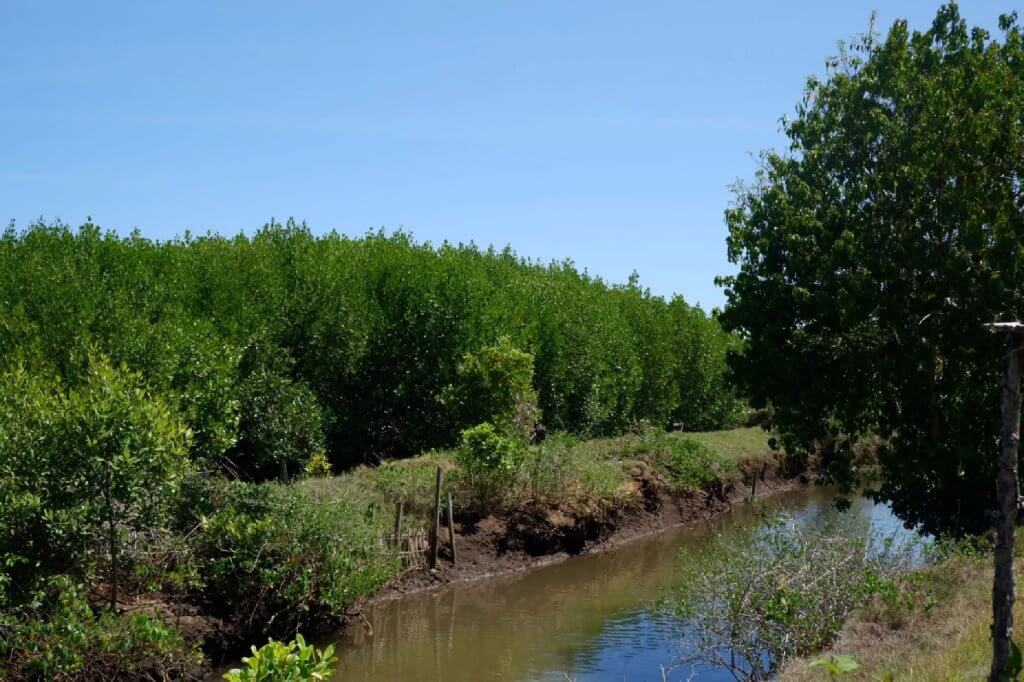
MAP News Issue # 606 – Sept. 07, 2024

Bombay High Court Greenlights Mangrove Clearing for Mumbai Railway Expansion
INDIA – The Bombay High Court has approved Western Railways’ proposal to remove 2,612 mangroves for the construction of additional rail lines between Borivali and Virar, recognizing the project’s potential to decrease traffic congestion, lower emissions, and save fuel. The decision, detailed in a ruling passed on August 30 and released on Thursday, mandates the replanting of 7,823 mangroves to mitigate ecological damage.


NGO Moves to Restore Five Million Mangroves in Niger Delta
NIGERIA – Following the degradation of the Niger Delta environment through years of oil exploration and other activities, a Non Governmental Organisation (NGO), Lokiaka Community Development Centre has disclosed its plan to plant five million mangroves to restore the biodiversity of the region.

The vanishing mangroves of El Salvador: ‘All our efforts may only slow the destruction’
EL-SALVADOR – In Barra de Santiago, local people are struggling to save one of the few remaining mangrove forests, as they are lost to agriculture and urban sprawl. More than a biodiversity haven, Barra de Santiago serves as a crucial carbon sink in a region battling deforestation, and a natural shield for a country exposed to climate crisis-induced tropical storms and escalating sea levels.

Pine Island Redfish to support Florida mangrove restoration
USA = Pine Island Redfish – a Florida-based regenerative aquaculture company cultivating red drum and halophytic plants – has announced a new collaboration with environmental apparel company MANG. Together, the two organisations aim to collect mangrove seeds which will then be nurtured in Pine Island Redfish’s nursery prior to being transplanted on Florida’s West coast.

Community involvement and Nature-Based solutions to protect Thai coast
THAILAND = The ocean and the coast play important roles in Southeast Asia as a residential area and a source of livelihood. The region’s coastline spans a total length of 234,000 km and its ocean supplies around 40% of the global fish supply; at the same time, it is also the home to a third of mangroves and coral reefs in the region.

The woman leading Angola’s fight for wetland conservation
ANGOLA – While they are often cited for their beauty, brightly plumed, slender-bodied flamingos are some of the most faithful birds on earth. Just like humans, they make lifelong friends. So it is fitting that one woman, Fernanda Samuel, has made the remarkable flamingos of Lobito, Angola, her own companions for life.

Invasive plant spreads through Cubatão mangroves
BRASIL – The mangroves in Baixada Santista cover about 70km² of the territory, spread across several municipalities. Of these, 15km² are being restored in Cubatão (SP). The site is home to an exotic species, the Sonneratia apetala , or apple mangrove, as it is popularly known. The plant, native to Southeast Asia, was first recorded in the Americas in this region and has worried experts due to its rapid spread and possible negative impacts on native ecosystems.
NOTE – this story is in Portuguese language
CURRENT EVENTS
Winners of MAP’s Mangrove Photography Awards
2024 Winners – MAP Mangrove Photography Awards
ACTION ALERTS
Join us in protecting Mexico’s jaguars and mangrove habitats
Fight the Marine Bitumen Spill
Stop land grabbing and racial discrimination for palm oil in Ecuador
Thank you to our many supporters who made this work possible, and to all of our friends and partners working to protect mangrove forests, worldwide. Mangrove Action Project relies on the generosity of donors to do our urgent work. Whether it’s a one-time or monthly commitment, your contributions make a real difference in safeguarding these critical ecosystems.
LIKE THIS NEWSLETTER?
Subscribe and never miss an issue!


